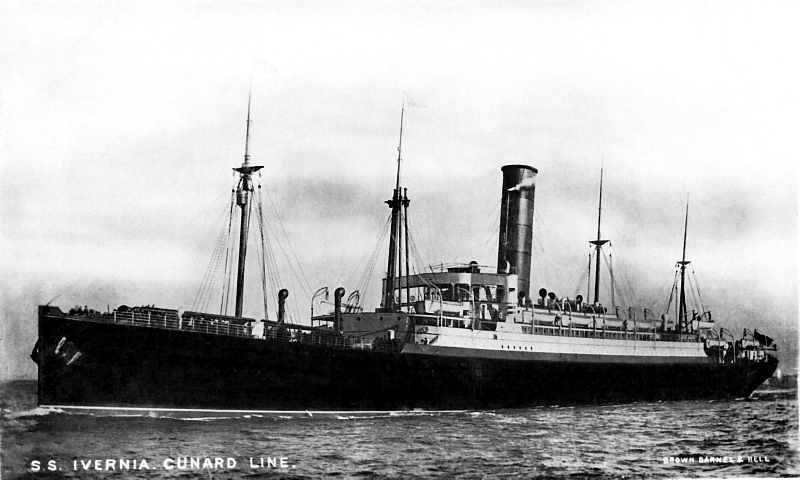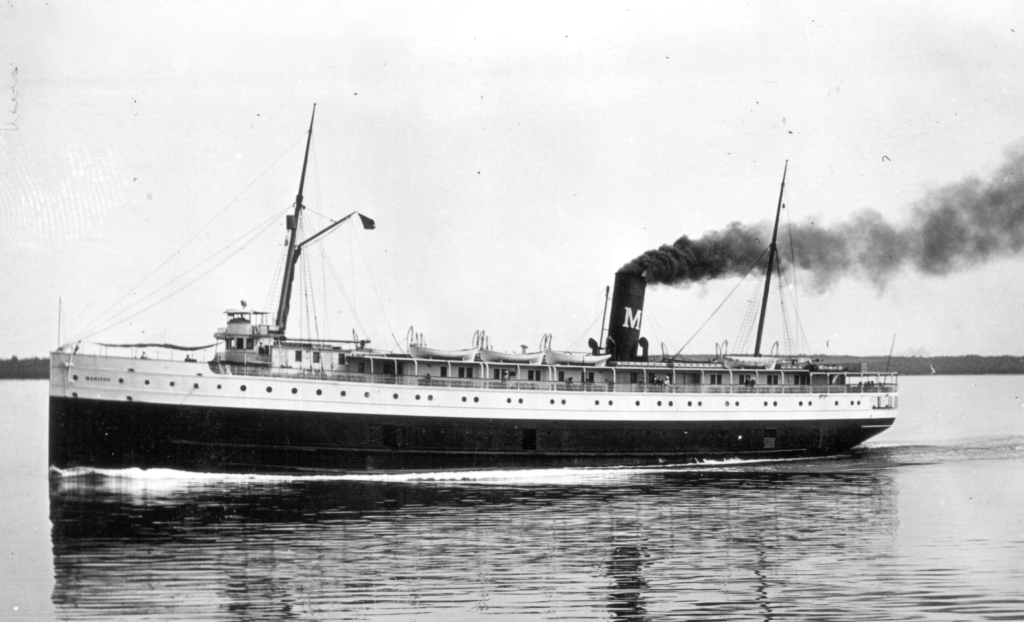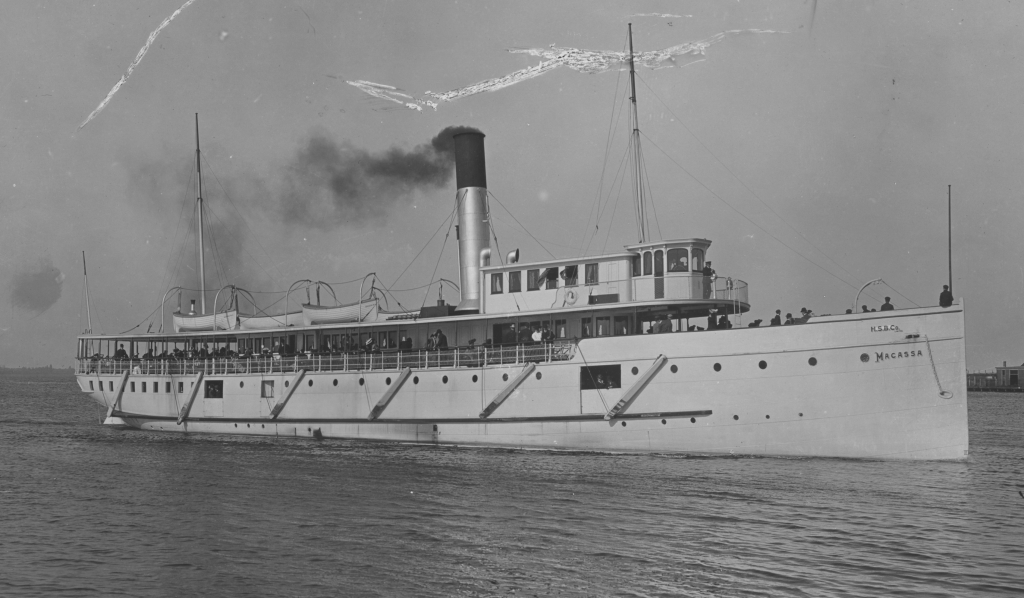LOCATIONS
Isle of Man: The family departs, RMS Ivernia, 1905
A small island in the middle of the Irish Sea between Great Britain and Ireland, Man has a ten thousand year history. Its first people were Celtic. The Manx/Gaelic language goes back to the 5th Century A.D. The Norse ruled from the 8th Century, and the Tynwald, the seat of their government, is considered to be the oldest, continuous parliament in the world. The name “Man” is said to come from the sea god Manannán, who protected the island with his cloak of mists. The Manx name Ellan Vannin, means “Manannán’s Island.” The island is rich in natural beauty and faery lore. Dangerous, mythical creatures, like the Buggane and the Phynodderree, are preserved in stories and songs. The tradition of saying hello to “themselves” on Fairy Bridge endures. The Manx are characterized as quiet, reserved people, once mainly fishermen and miners. They subsisted day to day, guided by the saying Traa dy liooar: “there’s time enough, do not rush or hurry, all will be well.” These words still greet travellers at the Douglas airport. During the early 1900’s, steamships brought thousands of cotton workers from Lancashire on a paid one-week holiday. Today, tourism accounts for a very small percentage of gross domestic product.
A beautiful island to visit, where one really does sense the presence of “themselves” in the woodlands and glens.


Mackinac Island: Henry's first trip, Manitou 1909
The Anishnaabek (also known as the Odawa, Ojibway and Potawatomi) tribes inhabited the Mackinac Island area for thousands of years. Mackinac Island was a meeting place for First Nations’ in the area, where Gitchi Manitou was honoured in traditional ceremonies. Manitou is an Algonquin word meaning “mystery,” representing the unknown power of life and the universe, connected to sun worship and mana, a personal, supernatural force. (Interesting how similar this is to Manánnan.) The island became a national park in 1875 and is now a state park. Cars were banned in 1898. Today, Mackinac Island is known as the top tourist destination in the United States. The Grand Hotel (1887) is the world’s largest summer hotel. The 1980 film “Somewhere In Time” popularized the hotel and inspired its inclusion in the novel. The ship Manitou brought thousands of tourists to Mackinac from Chicago in the early 1900’s. (https://greatlakes.bgsu.edu/item/437711). Used with kind permission, Bowling Green State University Libraries.
Manitoulin Island: Henry's second destination, Macassa, 1910
Manitoulin Island also has a long association with Gitchi Manitou, and is named for cave of the spirit Manidoowaaling, by the Ojibwe, Odawa and Potawatomi people. The land has been inhabited since at least 10,000 BC. It is the world’s largest fresh-water island, in the north end of Lake Huron. The island was abandoned for 150 years after wars with the Iroquois people. Native people began to return after 1812 and the island was set aside for them in 1836. In 1862, Treaty 94 land was offered for settlement through immigration, very cheaply. Though only fertile in some places, agriculture, sheep rearing and logging were important. Today, tourism is a mainstay. Though I have never been, my family were early settlers there and I researched the history extensively.
Macassa, Reprinted with kind permission, Bowling Green University Libraries.
These three magical islands feature as settings in Time Enough, all associated with faery lore and spirits according to Celtic and First Nations’ history and traditions going back millennia.


